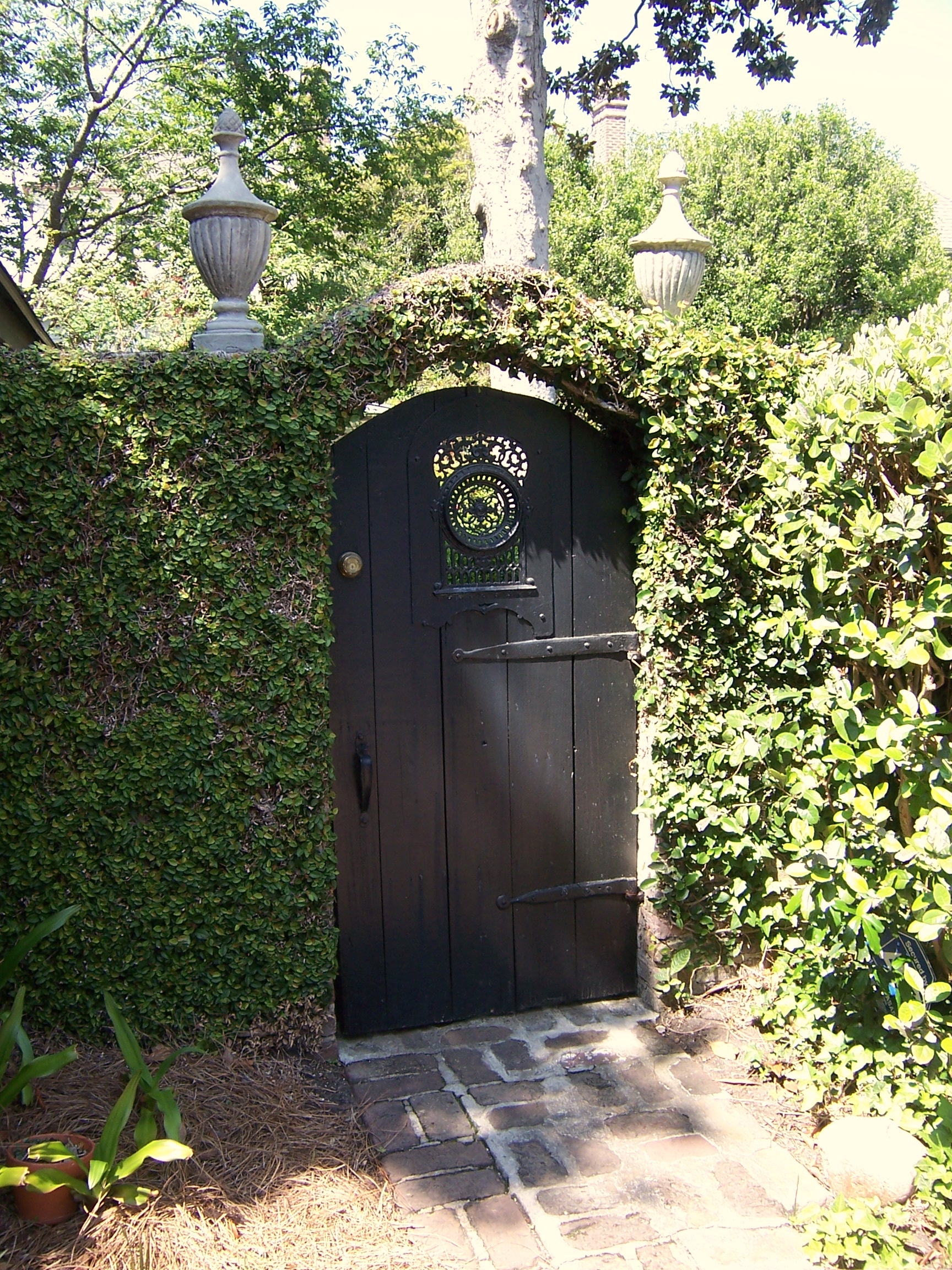What’s a Claire-Voie?
On the spine and back cover of my paperbacks and on the title page of all my novels, you’ll see my logo above the words “Claire-Voie Books.” What’s a claire-voie, you ask? It’s a gardening term borrowed from French that originated in the 17th century. A claire-voie (pronounced klair-vwah) is a window or opening that either looks onto a garden from outside it or that allows a person in one garden “room” to look into another part of the garden.
A claire-voie often features wrought iron openwork. I first came across the term in a blog post about Charleston, South Carolina, where the majority of my fiction takes place. Here are two examples of claire-voies in Charleston, windows onto private gardens (my own pics).
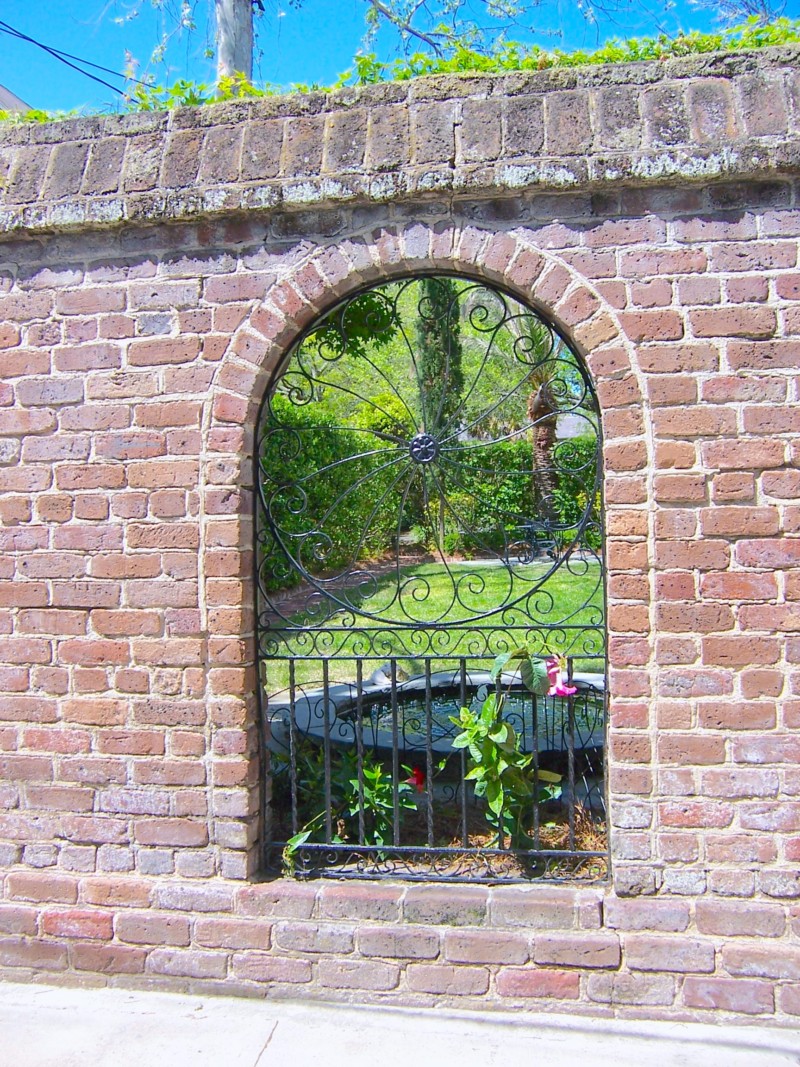
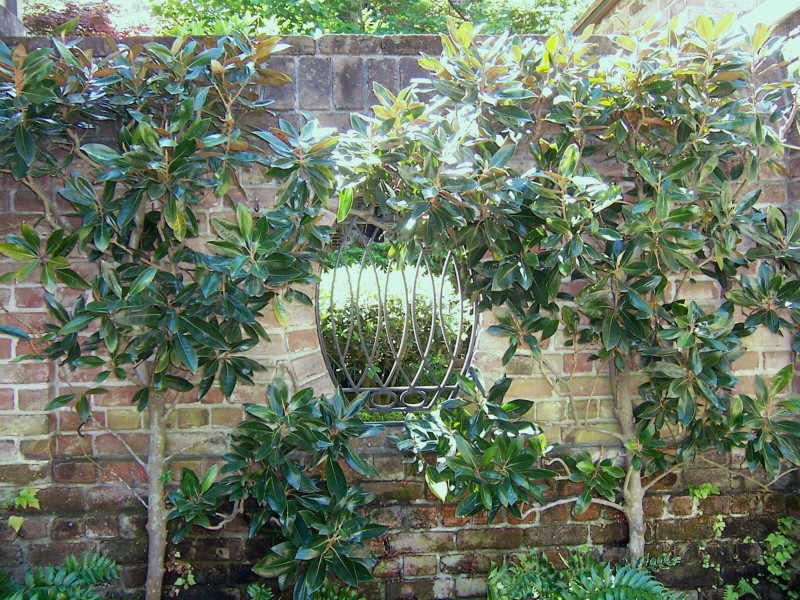
My character Tessa has a claire-voie that is set into the garden door of her Church Street house, half-hidden by climbing roses. This opening allows someone walking down Longitude Lane, say a lovelorn priest named Joseph, to peer into her garden. Tessa’s claire-voie was inspired by these real-life garden doors on Longitude Lane in Charleston:
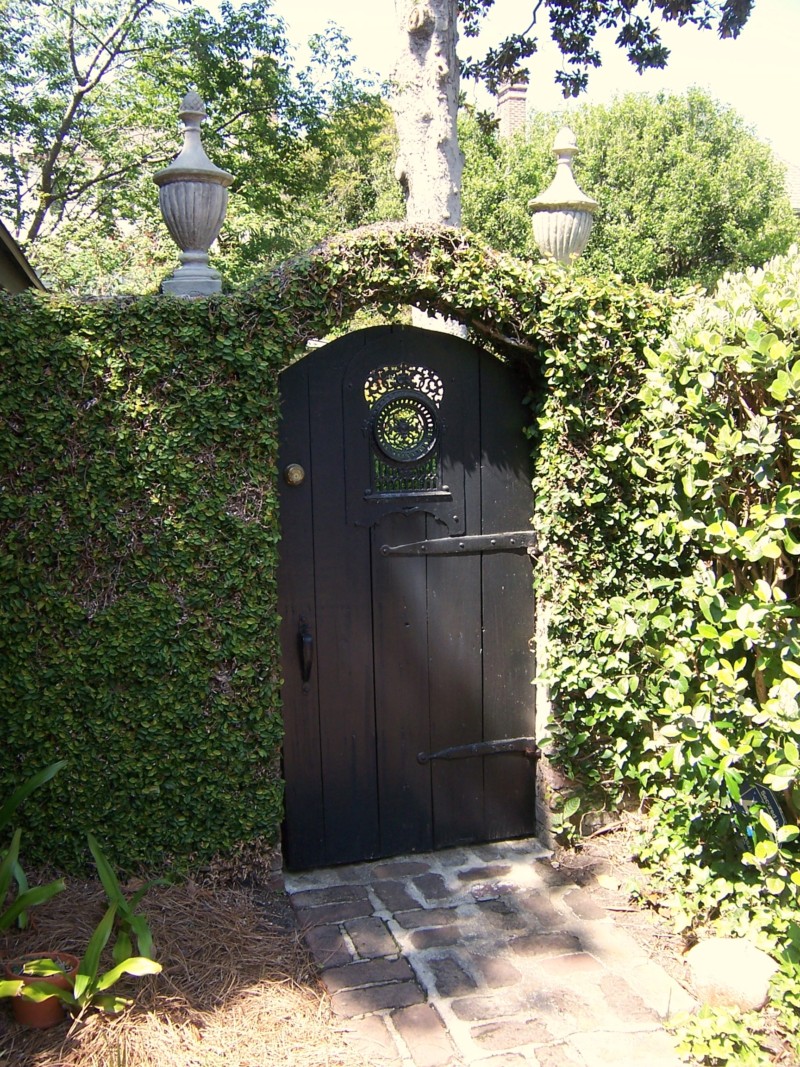
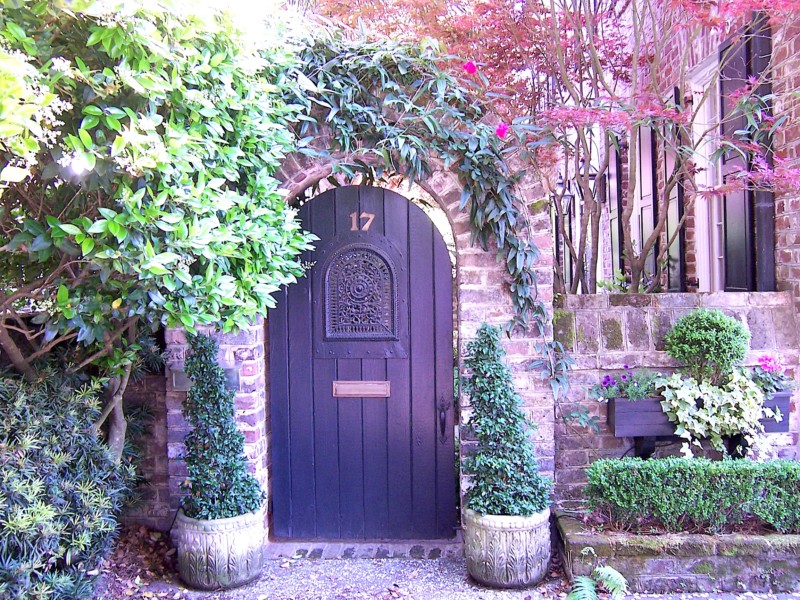
Joseph and Tessa, two of my central characters in Necessary Sins and Lost Saints, are both gardeners. It’s how they initially bond. Tessa’s garden door with its claire-voie is important to their relationship, and it will be important to her daughter as well. Joseph has French ancestry, so he knows the term. If you’re paying attention in Chapter 38 of Necessary Sins, you’ll discover that claire-voie also has a more risqué symbolism. Nobody does unconscious double entendres like a repressed Victorian priest.
I’ve been a Francophile for as long as I can remember; I took seven years of the language and lived in Aix-en-Provence for a semester. Literally, claire-voie translates from the French as “clear-way.” (Claire needs an e because voie is feminine.)
If claire-voie reminds you of “clairvoyant” (clear-sighted) that’s because the two terms have similar linguistic roots. I named my imprint Claire-Voie Books in order to evoke both. I designed my logo to symbolize Tessa’s claire-voie, among other meanings.

A claire-voie symbolizes my work as a writer as well. In my most recent newsletter (November 2019), I talked about my creative process and how I’ve felt my stories already existed in some nebulous other world. In order to tell them, I’m peering through a claire-voie into that other world and taking notes. I also talked about the spiritual dimension of my writing, how I hear my characters’ voices. The Oxford English Dictionary defines “clairvoyance” as “a supposed faculty attributed to certain persons, or to persons under certain mesmeric conditions, consisting in the mental perception of objects at a distance or concealed from sight.” The Encyclopedia Britannica defines clairvoyance as “knowledge…not obtained by ordinary channels of perceiving or reasoning.” When I’m “in the zone” and writing, when my characters are speaking to me, I do feel like I’m in a trance, as if I’m seeing things with my “mind’s eye.”
In addition to “clear,” the French word “clair” also means “light,” as in Debussy’s beautiful piece of music “Clair de Lune” (Moonlight). Claire-voie has a second meaning in French: a clerestory, the upper windows in a large church or cathedral that let in more light. Since most of my characters are Catholic and Joseph is a priest, this meaning is also appropriate to my work.

I’d like to think that in my historical fiction, I’m shedding light on truths that are too often concealed. As to why I needed my own imprint to tell these stories, that’s a tale for another blog post!

